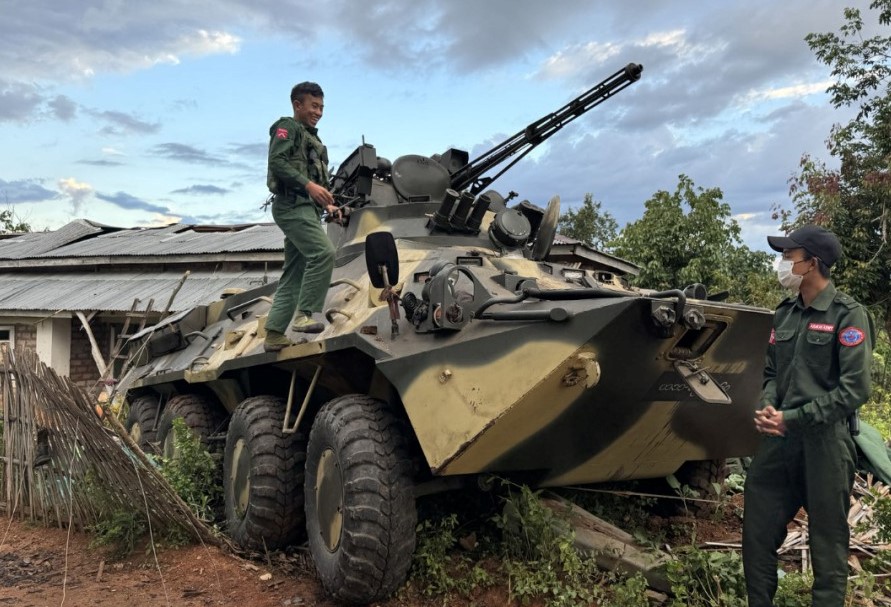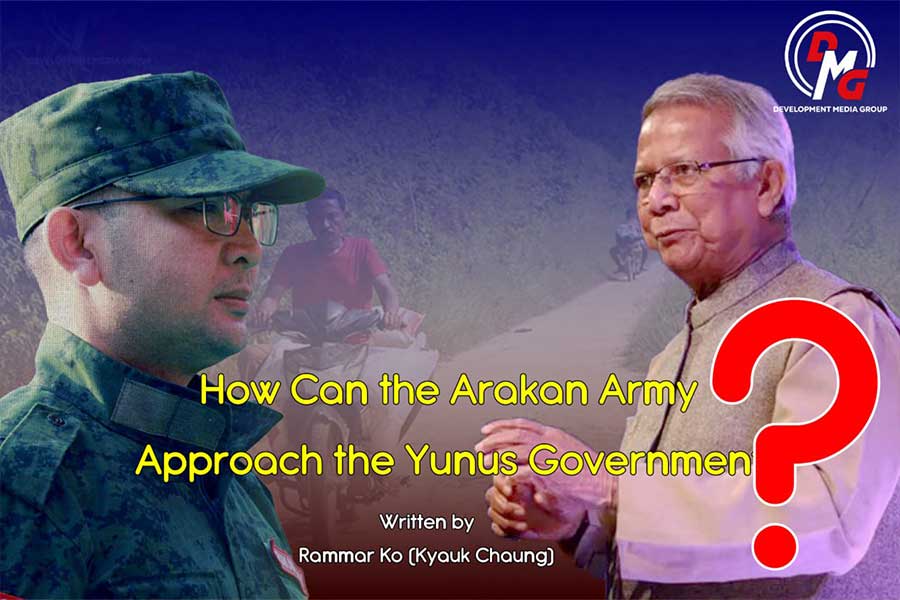‘Operation 1027’ and Myanmar’s Shifting Revolution
27 Dec 2023

Written by Maung Khaing Tun (Pyi Thit)
The Three Brotherhood Alliance, a tripartite ethnic military coalition made up of the Arakan Army (AA), Myanmar National Democratic Alliance Army (MNDAA) and Ta’ang National Liberation Army (TNLA), launched a large-scale offensive on October 27, 2023, in northern Shan State. Since then, Operation 1027 — the biggest military challenge to the regime since the 2021 coup — has expanded to other parts of the country, reaching Arakan State on November 13.
The Myanmar military, which seized power in February 2021, is faced with armed revolt across the country, and is even starting to lose control of entire towns.
The arrest and imprisonment of generals from junta chief Min Aung Hlaing’s inner circle on corruption charges, and punitive action against regional military commanders, show fractures within the military. And junta soldiers’ surrender to resistance forces in many battles indicates that the regime is being beaten psychologically.
Min Aung Hlaing has attempted to consolidate his control of the military by purging generals whom he distrusts. He recently ordered the arrest of Ye Htut, his senior in the Myanmar military academy, who served as information minister in U Thein Sein’s quasi-civilian administration.
The country’s economy has been in free fall since the coup. The prices of fuel and cooking oil have dramatically soared, forcing people to queue for them; commodities that were easily available for low prices under previous governments. Private banks are at the risk of collapse due to the junta’s policies.
An Unprecedented Operation
The Brotherhood Alliance gives priority to forging alliances since the popular revolt against the Myanmar military known as the Spring Revolution was launched after the 2021 coup. Over the past two and a half years, it provided training and arms for some People’s Defence Forces to strengthen the revolt in Bamar-majority areas, and revolt together in harmony.
The alliance has re-occupied the territory of the MNDAA that it had previously lost to the Myanmar military in northern Shan State near the Chinese border. The regime has lost control of some towns. China has given the green light for the military offensive at the border as the Brotherhood Alliance offers a clampdown on online scams and casinos at the border.
The regime has been under increased attacks in towns in many parts of the country including Kachin, Kayah, Kayin, Shan, Chin states as well as Sagaing, Magwe and Mandalay regions. The combativeness of the junta’s ground troops has been in decline, and the regime has been forced to rely on its air force and navy.
Since the Brotherhood Alliance launched its offensive in northern Shan State, it has spread to Sagaing, Mandalay and Magwe regions as well as Kachin, Chin and Arakan states. So, it is fair to say the operation is taking place in nearly half of the country if not more.
As the regime does not get help from its neighbour China to repulse the offensive, it is seeking military assistance from Russia.
The Other Government
The National Unity Government (NUG), which is primarily led by members of the National League for Democracy (NLD), has welcomed Operation 1027. It commands resistance forces across the country collectively known as PDFs, and has said it is working together with ethnic armed organisations.
As part of Operation 1027, the NUG-allied anti-regime forces took control of Kawlin, a district-level town bordering Kachin State. The PDFs have had serious problems with the Myanmar Royal Dragon Army (MRDA) based in Pale Township, Sagaing Region, and the MRDA seems to have retreated from Pale Township. The conflict was publicised after the MRDA joined the Northern Alliance.
Some weapons of the Sagaing Region-based Burmese National Army (BNA) have been seized by some Sagaing Region-based anti-regime forces under the NUG in recent months.
The NUG has achieved some successful diplomatic relations in the international arena. I am sure that it will be very difficult for the NUG to build up the scattered armed forces in the short term. Even though the NUG has been indirectly involved in some clashes, it is not yet seen to be effectively participating in Operation 1027.
It can be predicted that the Northern Alliance and the other ethnic armed groups that refer to the right to full self-determination are aiming for participation as a state in a federal union. It seems that the Northern Alliance and the ethnic armed groups intend to establish a federal system that has the right to administer their own state. This is a situation that can be predicted by looking at how the revolutionary armed forces have built an alliance today.
However, the NUG, which is made up of mostly elected members of the NLD, does not seem to accept this principle. The Sagaing Forum held in early 2023 was attended by most of the armed groups, and the NUG did not accept the principle that Sagaing Region would be included as a federal unit in the future federal state. The NUG’s alliance representative who attended the Sagaing Forum was dismissed from his position.
If you look at some of NUG’s supporters who have called out Bo Nagar, the leader of MRDA, as having received Chinese support, the NUG is leaning toward Burmese nationalism rather than geopolitical calculus. Meanwhile, to date, the NUG has not issued a policy defining the future Myanmar (or Burma) nation-state.
In the current Myanmar revolution, eradication of the dictatorial army is the main priority, but I see that it is also necessary to pay attention to the politics that will be built after the eradication. If not, we may go back to the strong-man authoritarianism that emerged with the breakdown of the Panglong commitment.




.jpg)















